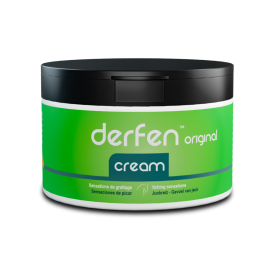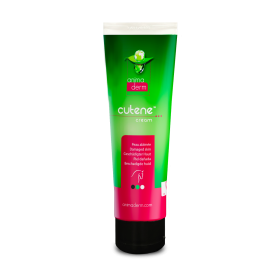Attainment and depilation of the horse's belly line, with or without itching
There are 2 distinct reasons for these attacks
CASE 1: Insects: The ventral line can be heavily attacked by insects in summer. Some horses react badly to these attacks and bite themselves violently. Scratching then follows very quickly, even almost immediately after the bites. In such cases, prevention is salutary. An instant soothing treatment can stop the problem in its tracks, so you can get back to prevention as quickly as possible.
CASE 2: photosensitization: localized hair loss under the belly with no apparent scratching may also be due to photosensitization to certain meadow grasses. In this case, scratching occurs later, when the skin cracks and becomes irritated.
Care must be taken, however, as it's not the same thing at all.
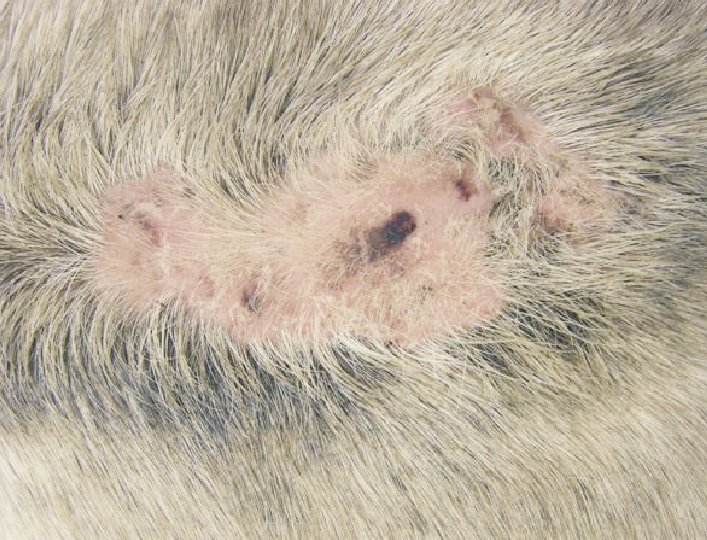
Preventing insect bites in this area requires the use of a balm. As the skin is thinner, any liquid product will have a short duration of action, forcing you to apply it daily.
Apply NATJELY to the areas to be protected every 2 or 3 days. Always carry out a small skin test beforehand to check the acidity of the skin, which could be an obstacle to application.
Tip: you can mix NATJELY with essential oils of your choice for a repellent effect, or mix a little DERFLY with your NATJELY (1/4-3/4).
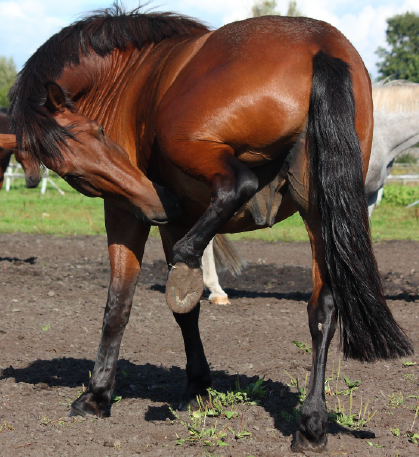
As with prevention, balm is essential.
Choose DERFEN balms according to the thickness of your horse's skin. They'll soothe and heal instantly, while continuing to protect the area.
Apply every 2/3 days.
Reapply when the balm is no longer visible.

This is most often the result of photosensitizing herbs in the pasture which, on contact with the recumbent horse, will irritate the thinnest areas of skin, such as the belly. Dry skin is a further reason for hair removal. At first, the horse doesn't scratch. But gradually, the tightness of the skin will lead to scratching and then to small unsightly sores or scabs.
The first step is to cleanse the area with SHAMPOO TEA TREE to eliminate any bacterial risk WITHOUT damaging the fragile skin (avoid conventional soaps).
Regular application of CUTENE will help resolve the skin problem. (Reapply when the cream is no longer visible).
If the problem is already too advanced, contact your vet for an antibiotic cream.
COVER OR NO COVER?
An insect repellent blanket with a flap under the belly is a fairly effective mechanical means if the horse is very sensitive to insects.
But be careful not to displace the problem: even if these blankets are very airy, they can trap perspiration and dust, increasing sweating and limiting the benefits of the wind. This can lead to skin maceration and bacterial growth.
Remember to put them on when you need them most, and wash them VERY often.
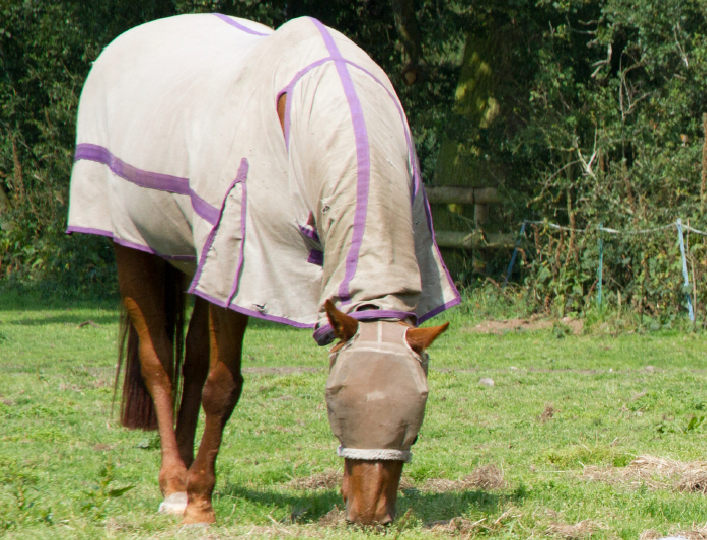
 ANIMADERM S.A.S
ANIMADERM S.A.S


